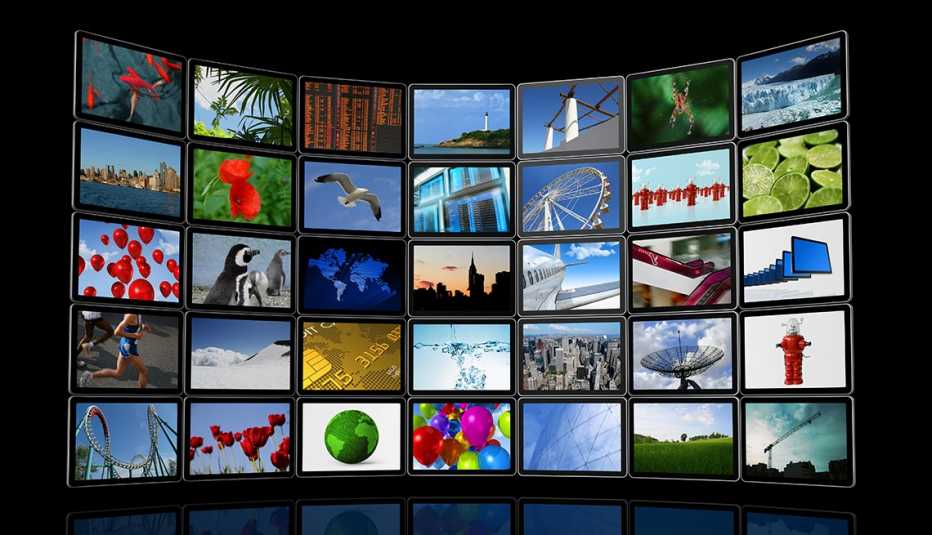Staying Fit


Not too long ago, all you did to watch TV was plug in the set, flick it on, and sit back and enjoy. Today’s screens are more of a “video hub,” drawing content from many sources, which is at once thrilling and frustrating.
And there's no doubt about it: TVs have gotten huge. Go to a store, and you’ll find screens at 80 inches or larger. (FYI: TVs are measured diagonally.) Before buying, you need the proper perspective. Here are some things to keep in mind when selecting your screen:


AARP Membership— $12 for your first year when you sign up for Automatic Renewal
Get instant access to members-only products and hundreds of discounts, a free second membership, and a subscription to AARP the Magazine.
Size Matters: How Big Should You Go?
HD TV
Measure your viewing distance in feet. Divide by 1.6, then multiply by 12. That’s the optimal screen size in inches. So if you sit eight feet away, you’d want a 60-inch high-definition (HD) TV.
Ultra-HD TV
With such fine resolution, you can pick a screen as big as you wish; it’ll look great. If you sit eight feet away, you can go larger than 60 inches, if your space and budget allow.
Can You Tell the Difference?
An HD television has roughly 2.1 million pixels, or dots of color, on its screen. An ultra-HD (or 4K) TV has roughly 8.3 million pixels. So a 4K picture would be much sharper than that of a standard HD TV. As Alex Haslam of the website How To Watch puts it: “If you watch basketball on a 4K, you can see every drop of sweat, every goose bump and every tiny twitch as hands release the ball.”
The question is, do you need that level of detail? It might make sense if you’re having trouble seeing your TV picture well. But if you’re like many people, the difference may not be that significant unless you’re watching a very large screen or are up close.
Oh! One more thing on TV innovations:
Some TVs boast more vivid colors, while others have an increased refresh rate (the number of times per second that the picture updates).

































































More From AARP
Buying a New TV? Here Are the Phrases You Need to Know
All the acronyms can be confusing as you shop for internet-enabled smart TVsWhat to Know About TV Streaming Services
More than a dozen options are available for your viewing pleasure
How to Hear Shows, Movies, Music on Your TV Better
Several tools can help those who struggle with sound